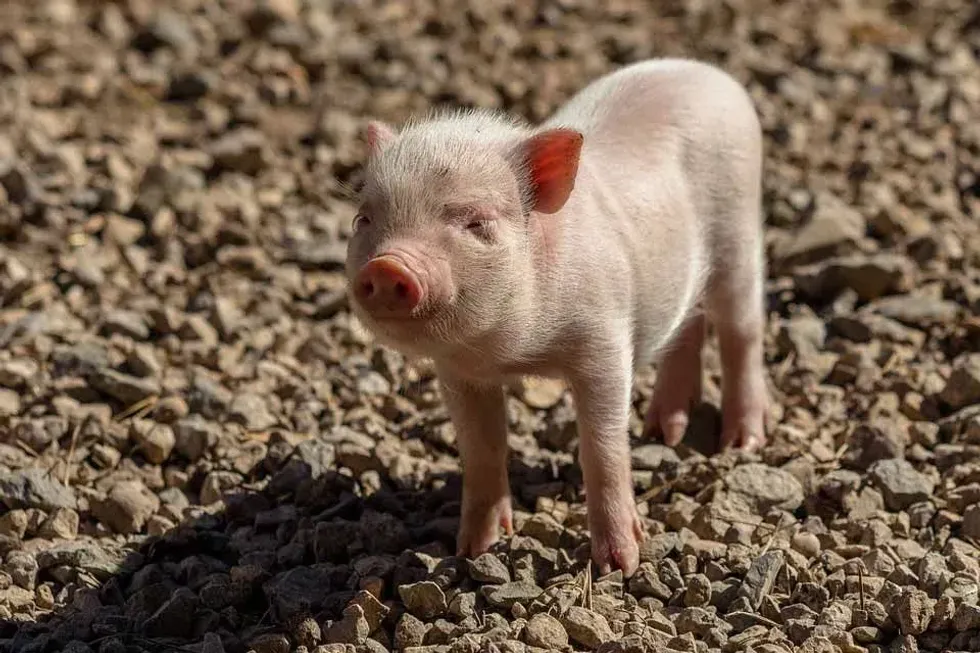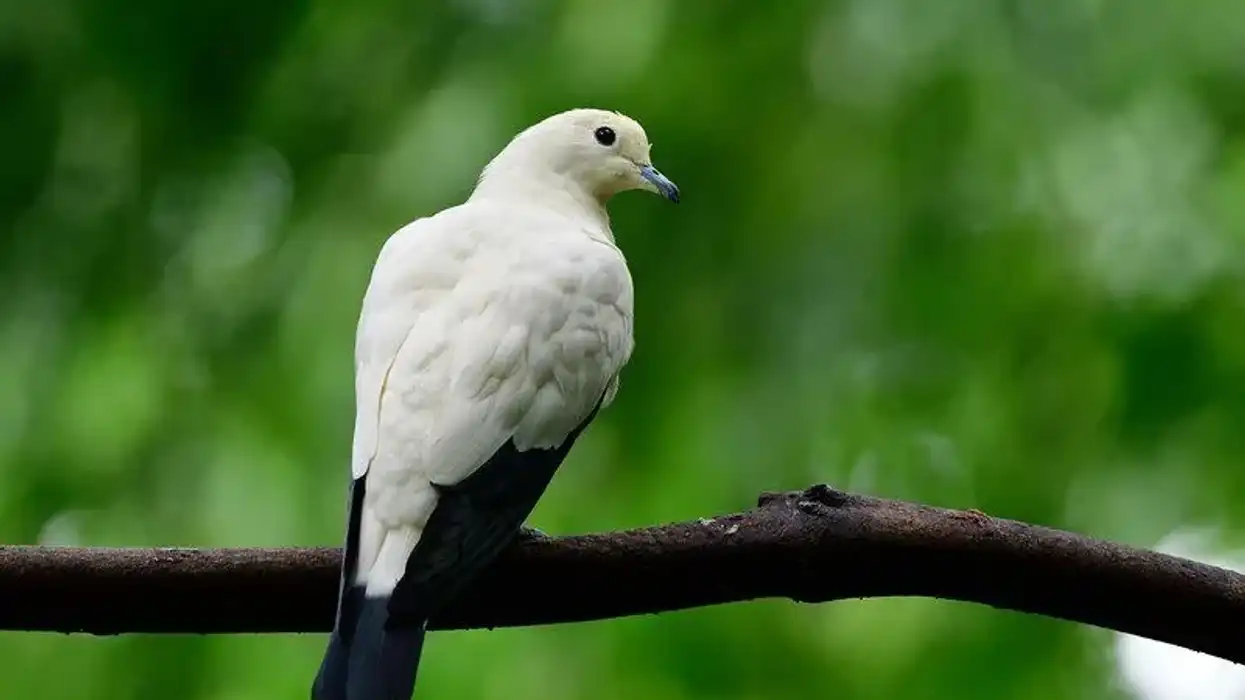A domestic pig is a big, domesticated, even-toed ungulate, that is sometimes also called a hog, swine, or simply a pig, when there is no real need to differentiate it from other pigs.
It is classified as either a subspecies of the Eurasian boar or a separate species. A hogs' size and weight are primarily determined by their breed and a pig's head is usually long, pointed, and wart-free when compared to other Artiodactyls.
The majority of these even-toed ungulates are herbivores, but domestic pigs, like wild pigs or wild boar (Sus scrofa) are omnivores.
These pigs have an interesting history. The domestic pig is commonly thought to be a subspecies of wild pigs (Sus scrofa), which Carl Linnaeus worked on in 1758, thus, the domestic pig's formal name is Sus scrofa domesticus.
Johann Christian Polycarp Erxleben, on the other hand, classified the domestic pig as a distinct species from wild pigs in 1777. Sus domesticus is the name he gave it, and some taxonomists still use this name.
Bones, hide, and bristles from the animal are all used in items that humans use. Pigs are also sometimes kept as pets, particularly miniature breeds.
Crossbreeding with the wild boar (Sus scrofa) or woolly boars has resulted in a variety of pigs, the most common of which is the domestic pig.
This animal is exceptionally clean and rarely soils its territory and they love to spend their time playing or sunbathing! This breed of boars is also known to have an acute sense of smell, which aids in their exploration of their surroundings.
In history, the first domestic pigs in Europe were brought into Europe from a site in the Near East.
This has been proven by DNA evidence from subfossil remains of neolithic pig teeth and jawbones. This prompted the domestication of local European wild pigs, resulting in a third domestication case in which Near-Eastern genes were eradicated from the general European pig stock.
Complex trades have occurred in modern domesticated pigs, with European domesticated lines being shipped to the ancient Near East, and Asian pigs were promptly introduced into Europe during the early 18th and 19th centuries, according to historical documents.
If you like reading these facts, you can also check our articles on the pot belly pig or mountain goat.
Domestic Pig Interesting Facts
What type of animal is a domestic pig?
The domestic pig (Sus scrofa domesticus) is a swine.
What class of animal does a domestic pig belong to?
Domestic pigs belong to the Mammalia class of animals.
How many domestic pigs are there in the world?
The world population of domestic pigs is around 780 million. These pigs are under no threat around the world.
Where does a domestic pig live?
Domestic pigs usually live on large farms.
What is a domestic pig's habitat?
This swine's habitat usually consists of large farms with other domesticated animals. A domestic pigs' behavior resembles that of cattle and sheep in several ways.
On the other hand, these mammals' nature has a lot in common with that of dogs and humans. As a result, they are known to socialize with each other, forming informal communities in which participants engage in physical interactions, such as huddling together.
Mud is widely used as an ultraviolet light defense by domestic pigs and wallowing in mud also assists these pigs in cooling down and removing parasites from their flesh.
They spend a lot of their time eating and sleeping while the weather is good! These animals have a natural tendency to build resting places, and often create their own rest spots in their habitats.
Who do domestic pigs live with?
Domesticated pigs live on farms with other livestock (like chickens, sheep and cows) and are taken care of by humans.
How long does a domestic pig live?
The lifespan of this breed of swine is usually 10-15 years.
How do they reproduce?
Female pigs achieve sexual maturity at between three and 12 months of age, and if they are not successfully bred, they go into estrus every 18–24 days. Intrinsic factors like age and genotype and extrinsic factors like diet, climate, and exogenous hormone supplementation all play a role in their ovulation rate variance.
The average gestation period is 112–120 days, after which cute baby piglets are born!
What is their conservation status?
The conservation status of these breeds of hogs is Not Listed on the IUCN red list. This is because their world population is under no major threat.
Domestic Pig Fun Facts
What do domestic pigs look like?
Every domestic pig looks different, but they are generally pink in color and have a long, pointed, and wart-free head, with a cute snout too.
How cute are they?
Baby hogs of this breed are definitely very cute.
How do they communicate?
Domestic hogs interact with each other using body language, verbal expression, and smell. Some breeds don't make as much noise as others. These breeds are usually calm and only make noise while they are near other pigs.
How big is a domestic pig?
A typical domestic pig's height can range from 35-71 in (0.9-1.8 m) tall. It is about 10 times as big as a chicken.
How fast can a domestic pig run?
Domestic pigs run as fast as 11 mph (17.7 kmph).
How much does a domestic pig weigh?
The weight of domestic pigs can be anywhere between 110-770 lb (50-350 kg).
What are their male and female names of the species?
A male swine is called a boar, while female pigs are known as a sow.
What would you call a baby domestic pig?
A baby domestic swine is part of a group of piglets.
What do they eat?
These species eat an omnivorous diet, which means they eat both animal and plant-based foods. However, maize, wheat, soy, and barley make up a large portion of their daily diet.
Small-scale farmers feed them slop, which is made up of discarded food such as potato peels and fruit rinds. When they are away from their feeding stations, they can come across other forms of food.
Are they loud?
Pigs are loud enough to be considered a nuisance but not all the time. A pig's squeal can reach 115 decibels, which is three decibels louder than a supersonic airliner! Although, not all pigs make enough noise to disturb the peace. They are normally calm animals that only make noise when they are near other pigs.
Would they make a good pet?
Pigs are intelligent, curious, and affectionate animals. But they are certainly not easy-to-care-for household pets.
Did you know...
Pigs are highly intelligent and easily trainable creatures that can pick up new tricks better than dogs. Piglets have learned their own names by the time they are two to three weeks old and normally answer to them.
They are the fourth most intelligent animals on the planet, behind chimps, dolphins, and elephants. However, if you try to pick up a pig, it will fight you before it falls down to the grass. Pigs, in general, are terrified of being captured.
Pigs are distant cousins of hippopotamuses.
For a long time, China had the world's largest number of domestic pigs. In China, a pig symbolizes luck, riches, honesty, and general prosperity, as well as indicating a hardworking, peace-loving individual who is honest, generous, patient, dependable, sociable, and has a strong sense of humor and understanding.
Pigs make a shrill, high-pitched squealing noise that can reach 115 decibels, which is three decibels louder than a Concorde flying at supersonic speed!
In order to bring pigs or piglets together, farmers simply make a shouting sound, which the pigs react to immediately.
The term loin appears in the names of the leanest pork cuts, such as pork tenderloin or loin chop meat, and is amongst the healthiest meat backed by science.
What do I feed a domestic pig?
These animals consume both animal and plant-based diets, making them omnivores. The bulk of their daily diet is comprised of corn, wheat, soy, or barley. Slop, made up of leftover food including potato peels and fruit rinds, is consumed on small-scale farms. When they are not near their feeding stations, they can encounter other food sources.
What do you call a female domestic pig?
Females of domestic pig breeds are known as a sow.
Here at Kidadl, we have carefully created lots of interesting family-friendly animal facts for everyone to discover! Learn more about some other mammals including the markhor, or plains zebra.
You can even occupy yourself at home by drawing one on our Domestic Pig coloring pages.










